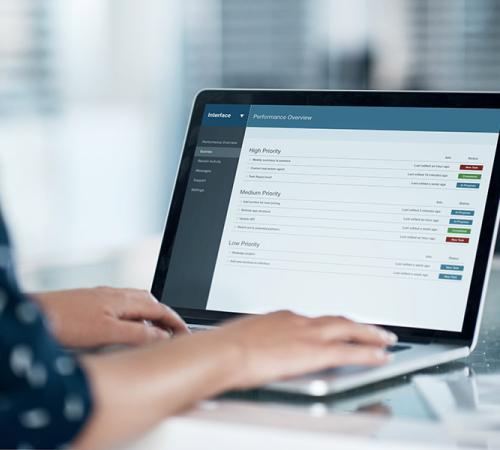

Understanding your small business’s true worth can be critical. Whether you’re considering selling the business, seeking investment, planning for succession, or applying for financing, an accurate business valuation can help you make informed decisions.
This guide explores various methods and factors that help determine what your business is worth.
What is a business valuation?
Business valuation is the process of determining a company's economic worth. It can incorporate a business’s assets, earnings potential, market position, and other key factors.
Why business valuation is important
Valuation can serve as the basis for major business decisions and transactions. An accurate valuation can help owners understand what drives value in their business and identify improvement areas.
Many companies need valuations when selling all or part of the business, seeking investment, planning succession, or applying for business loans.
For business owners seeking funding, a valuation can strengthen their position when negotiating with lenders or investors by demonstrating a clear understanding of the company’s worth. It can also help ensure that all parties in a transaction have a realistic starting point for negotiations, which can reduce the risk of deals falling through due to unrealistic price expectations.
In tax planning, accurate valuations can help minimise tax liabilities during ownership transfers, estate planning, or when establishing employee share schemes. For example, when selling shares or assets of a business, the valuation affects the calculation of Capital Gains Tax (CGT). Proper valuation can help ensure you’re not overpaying tax on the gain.
Finally, valuation might also serve as a benchmark for setting realistic financial goals and measuring performance against targets throughout the fiscal year. Without knowing what your business is worth, you might risk making decisions based on assumptions rather than facts.
Key factors influencing business valuation
Various factors affect the value of a business.
- Revenue and sales growth – consistent revenue growth is highly valued, demonstrating market demand and business stability
- Profit margins – strong and improving profit margins can indicate operational efficiency and pricing power in the marketplace
- Cash flow – stable, positive cash flow shows the business can sustain operations and fund growth
- Industry trends – the overall trajectory of your industry (whether it’s growing, shrinking, or staying the same) can impact valuation, with businesses in growing sectors typically valued higher
- Market position and competitive advantage – businesses with strong market share, unique intellectual property, or other competitive advantages are often valued higher
- Customer diversification – companies with a broad customer base might face less risk than those dependent on a few key clients
- Asset quality – tangible assets (property, equipment, inventory) and intangible assets (brand reputation, proprietary technology, patents) contribute to company value
- Scalability – businesses with proven ability to grow without spending proportionally more can be particularly attractive
- Debt and liabilities – less debt can mean reduced financial risk and therefore higher valuations.
Common business valuation methods
There are various methods to calculate business value.
Which method works for you depends on various factors, such as your business type, industry norms, business growth stage, purpose of the valuation, and your circumstances.
Asset-based valuation
This method calculates what a business is worth based on what it owns minus what it owes.
This approach focuses on the company’s balance sheet, adding up all tangible and non-tangible assets (buildings, equipment, cash, intellectual property) and subtracting all liabilities (loans, accounts payable, etc.). It can be particularly useful for businesses with many high-value assets or those with limited profits.
For example, ‘book value’ uses the balance sheet’s historical cost of assets minus liabilities.1 (external link)
Market-based valuation
This method determines value by comparing your business to similar ones that have recently sold.
This method identifies what buyers have actually paid for comparable businesses, similar to how residential properties are valued. Valuators identify businesses of similar size, industry, and financial performance that have recently been sold. They then apply relevant multiples (such as 2x revenue or 5x earnings) to your business figures. This approach can provide real-world evidence of what buyers are willing to pay. However, it also requires finding truly comparable sales data, which can be tricky for unique businesses.2 (external link)
Discounted cash flow (DCF)
This method is a type of income-based valuation. It estimates future earnings and converts them to today’s value by accounting for time and risk.
DCF analysis estimates how much cash the business will generate over a forecast period (typically 5-10 years), then applies a discount rate to convert future revenue to present value. This discount rate reflects both the time value of money and the risk level of achieving future cash flows. This is often considered a more sophisticated method because it focuses on future earning potential rather than past performance or asset values, which makes it particularly useful for growing businesses with strong prospects.3 (external link)
How to value a small business
Small businesses are typically valued differently to larger businesses. This is due to their unique characteristics and available data.
Market valuation
The most common valuation methods for small businesses include the market valuation, which often involves considering recent sales of similar businesses in similar locations and market conditions.
For example, A small café with an annual revenue of £100,000 is valued using a market multiple of 1.5x (based on recent sales of similar cafés). The business value would be:
Business value = £100,000 x 1.5 = £150,000.
Multiple of Seller’s Discretionary Earnings (SDE) Method
Another common method is the Multiple of Seller’s Discretionary Earnings (SDE). SDE is calculated by taking the net income and adding back expenses such as interest, tax, depreciation, non-operating income and expenses, non-recurring income and expenses, and owners’ compensation. Essentially, it represents the cash that an owner-operator has available after covering all operating expenses.
This method takes SDE and multiplies it by an industry-specific factor (typically 1-4x).
For example, a local retail store has £100,000 in adjusted annual profit. Using a 2x multiple, the business would be:
Business value = £100,000 x 2 = £200,000.4 (external link)
Disclaimer:
At Hiscox, we want to help your small business thrive. Our blog has many articles you may find relevant and useful as your business grows. But these articles aren’t professional advice. So, to find out more on a subject we cover here, please seek professional assistance.






